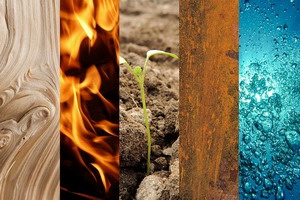 Thirty years ago I started an in-depth study of the ancient Chinese healing philosophy called the Five Elements. I had been lightly introduced to it many years previous as part of the muscle testing techniques I learned while still in school at UC Davis through the experimental college. I was aware from that introduction that the Chinese Five Elements were concerned with more than just physical health through acupuncture. Each basic imbalance also had an associated mental/emotional imbalance paired with it. Acupuncture energy medicine is seen as a kind of bridge or interface between the mental/emotional side of a human and the physical body.
Thirty years ago I started an in-depth study of the ancient Chinese healing philosophy called the Five Elements. I had been lightly introduced to it many years previous as part of the muscle testing techniques I learned while still in school at UC Davis through the experimental college. I was aware from that introduction that the Chinese Five Elements were concerned with more than just physical health through acupuncture. Each basic imbalance also had an associated mental/emotional imbalance paired with it. Acupuncture energy medicine is seen as a kind of bridge or interface between the mental/emotional side of a human and the physical body.
 In modern times we have a better understanding of the chemistry represented by the acupuncture meridians. The fields of psychoneuroendocrinology and psychoneuroimmunology are the study of the changes in neurology, hormones, and immune function in response to different brain states. In super simple terms, how and what you are feeling directly impacts your immune system and your hormones, which in turn control so many of your bodily functions. Old Chinese acupuncture and Five Element theory were early attempts to quantify these ‘invisible’ control circuits. I use the word invisible because there is nothing to see with the naked eye.
In modern times we have a better understanding of the chemistry represented by the acupuncture meridians. The fields of psychoneuroendocrinology and psychoneuroimmunology are the study of the changes in neurology, hormones, and immune function in response to different brain states. In super simple terms, how and what you are feeling directly impacts your immune system and your hormones, which in turn control so many of your bodily functions. Old Chinese acupuncture and Five Element theory were early attempts to quantify these ‘invisible’ control circuits. I use the word invisible because there is nothing to see with the naked eye.
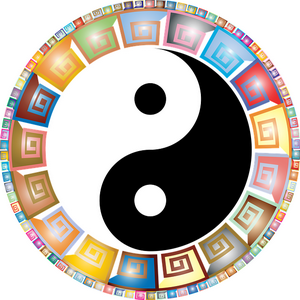 Thirty years ago I began expanding the rudimentary feeling associations with each of the five elements – water, wood, fire, earth, and metal. (The Greeks had a similar concept of everything being composed of 5 basic elements – water, fire, ether, earth, and air. However, the common folks were only told about four elements as the study of ether was reserved for mystery schools and philosophers.) I expanded each element by adding the perceptions from the Chinese Taoist philosophy of Yin and Yang for each element. I saw the feelings attached to each element as having first an inflow expression and then an outflow expression. Central to understanding the Five Elements is the understanding of how the elements form a cycle of creation, each dependent upon the proper functioning of the elements before it in the cycle. This understanding showed me how our human feeling experience of life is built in a step-wise fashion. This opened the door to seeing how the various negative feeling experiences we get stuck with in life are really the result of a breakdown in that building of the proper steps to the functional feeling skills we need to effectively navigate life.
Thirty years ago I began expanding the rudimentary feeling associations with each of the five elements – water, wood, fire, earth, and metal. (The Greeks had a similar concept of everything being composed of 5 basic elements – water, fire, ether, earth, and air. However, the common folks were only told about four elements as the study of ether was reserved for mystery schools and philosophers.) I expanded each element by adding the perceptions from the Chinese Taoist philosophy of Yin and Yang for each element. I saw the feelings attached to each element as having first an inflow expression and then an outflow expression. Central to understanding the Five Elements is the understanding of how the elements form a cycle of creation, each dependent upon the proper functioning of the elements before it in the cycle. This understanding showed me how our human feeling experience of life is built in a step-wise fashion. This opened the door to seeing how the various negative feeling experiences we get stuck with in life are really the result of a breakdown in that building of the proper steps to the functional feeling skills we need to effectively navigate life.
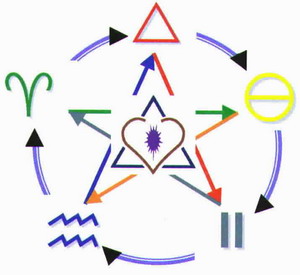 Let’s look at that step-wise process. Traditional Five Element theory looks at things from a very medical viewpoint, meaning what do things look like when they are broken. From that viewpoint, water is associated with fear, wood with anger, fire with hysteria, earth with worry, and metal with grief. These perceptions were used to help diagnose the patient’s problem and guide treatment. Some discussion was given to how these feelings would shift as the imbalances were brought under control. I took this to mean that extreme feelings were the result of some imbalance of forces within the person.
Let’s look at that step-wise process. Traditional Five Element theory looks at things from a very medical viewpoint, meaning what do things look like when they are broken. From that viewpoint, water is associated with fear, wood with anger, fire with hysteria, earth with worry, and metal with grief. These perceptions were used to help diagnose the patient’s problem and guide treatment. Some discussion was given to how these feelings would shift as the imbalances were brought under control. I took this to mean that extreme feelings were the result of some imbalance of forces within the person.
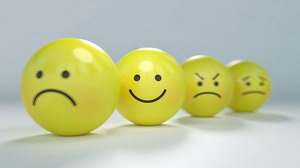 This is very much the same philosophy Chiropractic has about disease. But my training from my undergraduate degree in educational psychology is interested in how we learn about these imbalances and then learn to grow out of them. To do this we have to have a good picture of what health looks like in each of these areas. Then we can form a goal we can feel our way towards. My personal process is to feel where I am and then feel what is blocking my movement to where I wish to be.
This is very much the same philosophy Chiropractic has about disease. But my training from my undergraduate degree in educational psychology is interested in how we learn about these imbalances and then learn to grow out of them. To do this we have to have a good picture of what health looks like in each of these areas. Then we can form a goal we can feel our way towards. My personal process is to feel where I am and then feel what is blocking my movement to where I wish to be.
So let’s describe this 5 element cycle of self-creation in its healthy form.
 Yin water: The cycle of growth begins with our attention being drawn to something in life we want to accomplish or are attracted to.
Yin water: The cycle of growth begins with our attention being drawn to something in life we want to accomplish or are attracted to.
Yang water: Bubbling up from our core potential (what I call our blueprint) mixed with what feeling skills we have developed so far comes our current feeling relationship to what we want.
 Yin wood: This is our imaginative vision of how to move our feeling self into physical action towards our goal while adapting to what is.
Yin wood: This is our imaginative vision of how to move our feeling self into physical action towards our goal while adapting to what is.
Yang wood: This is where we build the assertive confidence to actually move into action. This is like building the story that drives the hero into action. This may involve first building the skills needed to engage that aspect of life.
 Yin fire: This is the invitation state from which you shine and attract participation with you. It is what you do to get people to pay attention to you initially.
Yin fire: This is the invitation state from which you shine and attract participation with you. It is what you do to get people to pay attention to you initially.
Yang fire: Here you are shining out with what you have to offer life that you believe will give you value.
 Yin earth: Your will to connect and participate starts with you receiving what others’ needs are from a state of empathy without giving up on yourself in the process.
Yin earth: Your will to connect and participate starts with you receiving what others’ needs are from a state of empathy without giving up on yourself in the process.
Yang earth: You offer your gifts in a harmonious manner to those you are connecting to as a means of supporting mutual attainment of meeting needs.
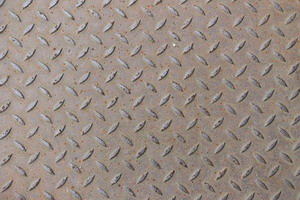 Yin metal: You take in, appreciate and trust the feedback about your offerings as truthful statements about how well you serve their needs and wants while also assessing how well they are serving your needs and wants.
Yin metal: You take in, appreciate and trust the feedback about your offerings as truthful statements about how well you serve their needs and wants while also assessing how well they are serving your needs and wants.
Yang metal: Here you use the clarity of your discernment to decide what behaviors and gifts you can usefully continue to give and what you need to let go. Likewise, you discern whether your participation is giving you what you need. Is what you want even available? If not then either let the want go or look somewhere else.
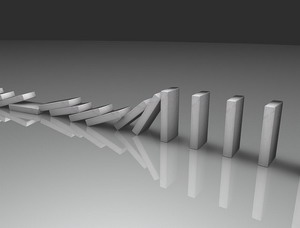 Once you have let go of what does not work and embraced what does, then you get to start over at yin water by seeing and feeling what attracts you now to move you forward to your next step in the unfolding of your life. After 30 years of studying and working with unraveling blocks to personal growth with many many people, I have come to trust and rely on this simple model for how humans are designed to grow up. I have also come to appreciate the vast number of ways we manage to screw up this process. Every step depends on the successful completion of the step before. The cycle keeps rolling forward like a snowball growing ever bigger. Failed steps get buried deep in the center of our snowball and generate distortions in the development of our personality.
Once you have let go of what does not work and embraced what does, then you get to start over at yin water by seeing and feeling what attracts you now to move you forward to your next step in the unfolding of your life. After 30 years of studying and working with unraveling blocks to personal growth with many many people, I have come to trust and rely on this simple model for how humans are designed to grow up. I have also come to appreciate the vast number of ways we manage to screw up this process. Every step depends on the successful completion of the step before. The cycle keeps rolling forward like a snowball growing ever bigger. Failed steps get buried deep in the center of our snowball and generate distortions in the development of our personality.
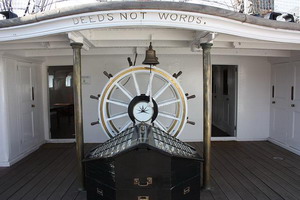 Our life is the direct result of the decisions we make in each moment as we deal with and navigate the chaos that is life. If we do not learn effective skills at every step of the way, our decisions will be less than stellar. Each of these 10 steps involves developing a new skill, a new stance, and a new relationship with life. Life is designed to be a perpetual challenge, a constant adaptation to the ever-changing nature of life. There are no rest stops. Avoidance or resistance to this process just means steps you have not taken and skills you have not learned. That means the quality of your decisions degrades and your life goes downhill when you try to make things stay the same so you can be comfortable. That is why I say that seeking comfort is a slow-acting poison. Growth and adaptation are designed to be exciting and challenging in a good way, and it is when you have a fundamental appreciation of life skills in place. But if you got stuck with a child’s perception that you are entitled to have life be your way, life just gets progressively more unpleasant. Why? Because life
Our life is the direct result of the decisions we make in each moment as we deal with and navigate the chaos that is life. If we do not learn effective skills at every step of the way, our decisions will be less than stellar. Each of these 10 steps involves developing a new skill, a new stance, and a new relationship with life. Life is designed to be a perpetual challenge, a constant adaptation to the ever-changing nature of life. There are no rest stops. Avoidance or resistance to this process just means steps you have not taken and skills you have not learned. That means the quality of your decisions degrades and your life goes downhill when you try to make things stay the same so you can be comfortable. That is why I say that seeking comfort is a slow-acting poison. Growth and adaptation are designed to be exciting and challenging in a good way, and it is when you have a fundamental appreciation of life skills in place. But if you got stuck with a child’s perception that you are entitled to have life be your way, life just gets progressively more unpleasant. Why? Because life  just simply is not your way. Life is like a huge river. You can either enjoy floating along playing in the current of the water, or you can fight the river and try to make it stand still. The river always wins.
just simply is not your way. Life is like a huge river. You can either enjoy floating along playing in the current of the water, or you can fight the river and try to make it stand still. The river always wins.
Take care,
David
